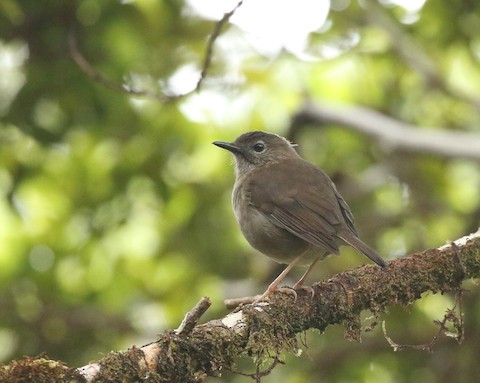Birdfinding.info ⇒ The critically endangered Puaiohi has been rare since described in the 1890s, but it has outlasted the related Kama’o, which was then estimated to be 100 times more common. Unlike most other endangered Hawaiian birds, the Puaiohi has apparently increased since the 1970s, due in part to captive propagation and the provision of nest boxes. In addition to being rare and having a remote range, it is also secretive. Visitors to the Alakai Plateau have only a slim hope of finding one, perhaps most likely in valleys of the Kawaikoi Stream drainage along the Pihea and Alakai Swamp Trails.
Puaiohi
Myadestes palmeri
Endemic to Kauai, where it is essentially confined to upper elevation ohia forests of the Alakai Plateau and spends most of its time in ravines with dense undergrowth.

Approximate range of the Puaiohi (bold black line). © Pacific Rim Conservation 2012
The total population was estimated at about 500 in 2013, and has been stable since recovering from losses incurred by Hurricane Iniki in 1992. A captive breeding program from 1996 to 2012 succeeded in producing 237 offspring, but most of those released into the wild did not survive.
Identification
A plump, short-tailed Myadestes solitaire with brown upperparts, medium-gray underparts, a thin dark whisker mark, an incomplete, pale-gray eyering, and pale-pink legs.
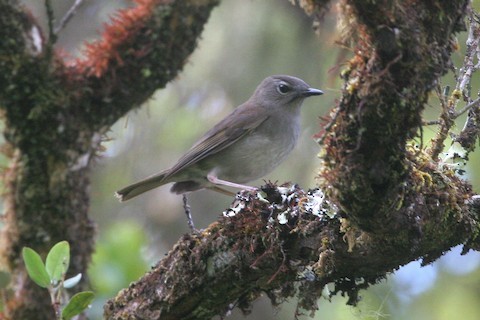
Puaiohi. (Alakai Wilderness Preserve, Kauai, Hawaii.) © Eric VanderWerf

Puaiohi. (Alakai Wilderness Preserve, Kauai, Hawaii.) © Joachim Bertrands

Puaiohi. (Alakai Wilderness Preserve, Kauai, Hawaii.) © Jacob Drucker

Puaiohi. (Alakai Wilderness Preserve, Kauai, Hawaii.) © Gavin Emmons
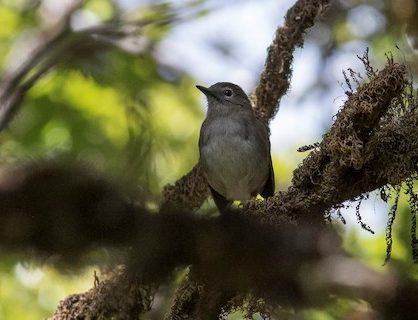
Puaiohi. (Alakai Wilderness Preserve, Kauai, Hawaii.) © Jacob Drucker

Puaiohi, adult attending to chicks in nest. (Alakai Wilderness Preserve, Kauai, Hawaii.) © Eric VanderWerf
Immatures are heavily spotted on the underparts, head, and wings. The underparts, in particular, are densely covered with dark-bordered, pale-centered spots.
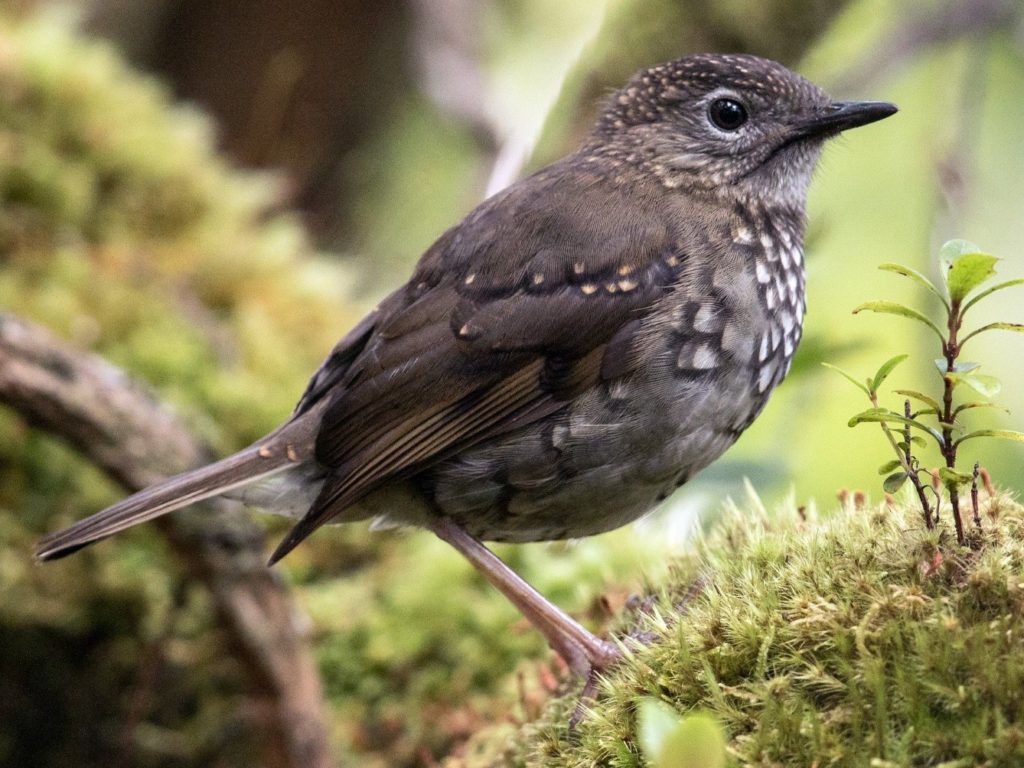
Puaiohi, immature molting into adult plumage. (Alakai Wilderness Preserve, Kauai, Hawaii.) © Eric VanderWerf
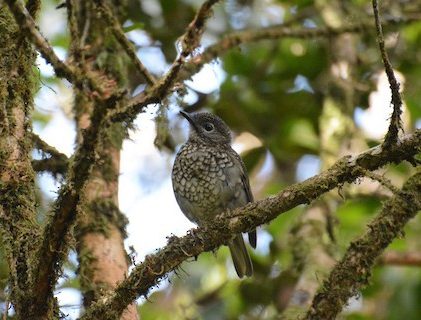
Puaiohi, juvenile. (Alakai Wilderness Preserve, Kauai, Hawaii.) © Nick Vinciguerra
Notes
Monotypic species. Formerly known as the Small Kauai Thrush.
IUCN Red List Status: Critically Endangered.
References
BirdLife International. 2018. Myadestes palmeri (amended version of 2016 assessment). The IUCN Red List of Threatened Species 2018: e.T22708583A128101101. https://dx.doi.org/10.2305/IUCN.UK.2016-3.RLTS.T22708583A128101101.en. (Accessed July 31, 2020.)
Collar, N., and C.J. Sharpe. 2020. Puaiohi (Myadestes palmeri). In Handbook of the Birds of the World Alive (J. del Hoyo, A. Elliott, J. Sargatal, D.A. Christie, and E. de Juana, eds.). Lynx Edicions, Barcelona. https://www.hbw.com/node/58235. (Accessed May 10, 2020.)
eBird. 2020. eBird: An online database of bird distribution and abundance. Cornell Lab of Ornithology, Ithaca, N.Y. http://www.ebird.org. (Accessed July 31, 2020.)
Pacific Rim Conservation. 2012. Hawaiian Bird Conservation Plan: Focal Species: Puaiohi or Small Kaua‘i Thrush (Myadestes palmeri). October 2012. https://pacificrimconservation.org/wp-content/uploads/2013/10/Puaiohi.pdf.
Pratt, H.D., P.L. Bruner, and D.G. Berrett. 1987. A Field Guide to the Birds of Hawaii and the Tropical Pacific. Princeton University Press.
Pratt, H.D. 1993. Enjoying Birds in Hawaii: A Birdfinding Guide to the Fiftieth State (Second Edition). Mutual Publishing, Honolulu, Hawaii.
Pyle, R.L., and P. Pyle. 2017. The Birds of the Hawaiian Islands: Occurrence, History, Distribution, and Status. Version 2 (January 1, 2017). http://hbs.bishopmuseum.org/birds/rlp-monograph/. B.P. Bishop Museum, Honolulu, Hawaii.
Xeno-Canto. 2020. Puaiohi – Myadestes palmeri. https://www.xeno-canto.org/species/Myadestes-palmeri. (Accessed July 31, 2020.)
